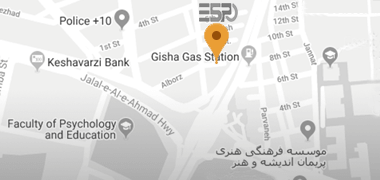
طراحی دکوراسیون داخلی مسکونی یکی از مهمترین عوامل در ایجاد فضایی آرامشبخش و زیبا در خانه است که نه تنها جنبههای زیباییشناختی، بلکه جنبههای کاربردی و عملکردی را نیز شامل میشود. هدف از طراحی داخلی در خانه، ایجاد فضایی متناسب با نیازهای ساکنان و بازتابدهندهی سبک زندگی، شخصیت و سلیقه آنها است.
انتخاب رنگها: رنگها تأثیر عمیقی بر روحیه و احساسات افراد دارند. استفاده از رنگهای ملایم و خنثی معمولاً حس آرامش و سکون را به فضا میبخشد، در حالی که رنگهای جسورانه و پر انرژی میتوانند محیط را پویا و زنده کنند. انتخاب صحیح رنگها میتواند فضاهای کوچک را بزرگتر و روشنتر جلوه دهد و بالعکس.
چیدمان مبلمان: مبلمان نه تنها باید از نظر زیبایی جذاب باشد، بلکه باید به گونهای انتخاب و چیده شود که فضای کافی برای حرکت و استفاده روزانه وجود داشته باشد. هر قطعه مبلمان باید به گونهای در فضا قرار گیرد که استفاده از آن راحت و کاربردی باشد و در عین حال هماهنگی و تعادل بصری با دیگر اجزای دکوراسیون برقرار شود.
نورپردازی: نورپردازی یکی از مهمترین عناصر طراحی داخلی است. نور طبیعی در طول روز باعث ایجاد حس شادابی و طراوت در فضا میشود. نور مصنوعی، به ویژه در شب، میتواند با استفاده از لامپها و چراغهای مناسب، محیطی گرم و دنج را خلق کند. استفاده از ترکیب نورهای محیطی، نقطهای و تاکیدی میتواند به ایجاد حسهای متفاوت در هر فضا کمک کند.
بافت و متریال: استفاده از بافتها و مواد متنوع مانند چوب، فلز، شیشه و پارچه به فضا شخصیت میبخشد. ترکیب متریالهای طبیعی با عناصر مدرن میتواند فضایی گرم و دعوتکننده ایجاد کند. همچنین، استفاده از پارچههای مختلف مانند پردهها، فرشها و کوسنها به فضا عمق و جذابیت میدهد.
استفاده بهینه از فضا: یکی از مهمترین جنبههای طراحی دکوراسیون داخلی مسکونی، استفاده بهینه از فضا است. این موضوع به خصوص در خانههای کوچک اهمیت زیادی دارد. انتخاب مبلمان چند منظوره، طراحی دیوارهای ذخیرهسازی و استفاده از فضای عمودی میتواند به حداکثر بهرهوری از فضا کمک کند.
هماهنگی و تعادل: برای ایجاد یک فضای دلنشین، هماهنگی بین تمامی عناصر دکوراسیون (مانند مبلمان، رنگها، نور و بافتها) ضروری است. تعادل بین این عناصر به فضا حس هماهنگی و یکپارچگی میبخشد. نتیجهگیری: طراحی دکوراسیون داخلی مسکونی نه تنها خانه را به یک مکان زیبا و دلپذیر تبدیل میکند، بلکه محیطی متناسب با نیازهای ساکنان ایجاد میکند که در آن احساس راحتی و آرامش داشته باشند. هر خانه باید بازتابی از شخصیت و سبک زندگی افراد ساکن در آن باشد و دکوراسیون داخلی مناسب میتواند این بازتاب را به بهترین شکل ممکن ارائه دهد.













